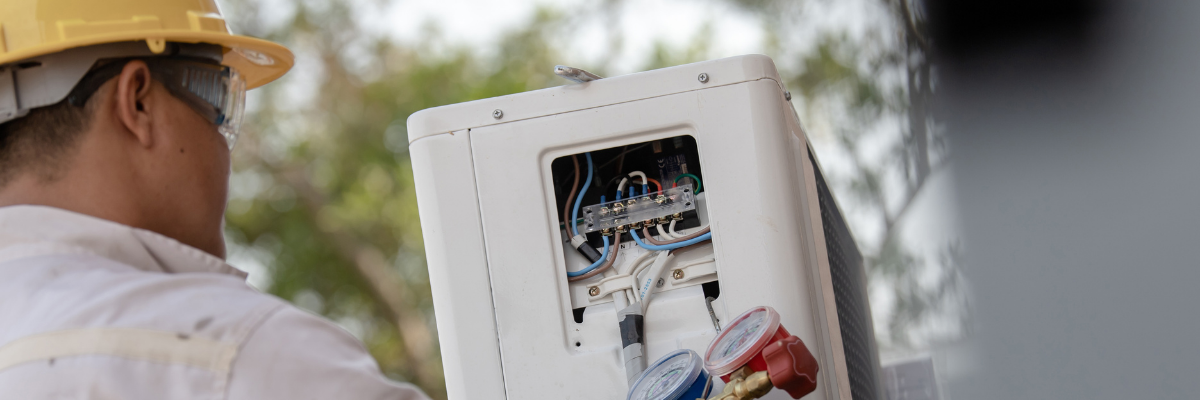As a service technician, you are confronted with repair problems all day long, and it’s your job to solve them. Applying critical thinking skills can improve your ability to solve tech repair problems effectively and efficiently.
How critical thinking helps with technical problem solving
Sometimes problem solving doesn’t involve much thinking, but rather following a set of predetermined steps or directions. Chances are, you have many repair appointments that go this way. You can solve the problem easily without thinking too much about it, and by doing what you always do.
On the other hand, when you face a challenging problem where the solution is not so obvious, putting on your critical thinking hat can make all the difference. It helps you sort through the information you have, evaluate its validity and its usefulness, identify what you might be overlooking, and use reasoning to hone in on the most likely solution.
Knowing how to apply critical thinking skills to the task at hand separates the highly successful technicians from the average ones.
But what exactly is critical thinking and how can you use it to solve HVAC and Refrigeration equipment problems?
What is critical thinking?
You’ll find a wide variety of definitions for critical thinking out there, since there are so many different ways to use the skill. Here’s a useful way to define critical thinking for solving technical and repair problems:
Critical thinking is the ability to rationally and systematically gather evidence, analyze the evidence, and apply reasoning to uncover the best solution to a problem.
Here are the key steps in the critical thinking and problem solving process for technical repairs:
- Precisely define the problem. Precisely is the key word here; you want to be as specific as you can in identifying what’s wrong. Instead of “the AC is not working,” dig deeper to find out more, like “the air handler is blowing warm air.”
- Plan your strategy. What information will you need, and what must you test, to uncover the root cause of the problem and determine how to fix it?
- Gather information. Talk to the customer and other occupants of the space if you can. Ask for a full report of symptoms and when they started. Use diagnostic tools and observation to discover the system’s condition and behavior. Consult system documentation and/or more experienced colleagues if needed.
- Analyze your findings. How reliable is the information you have? What’s the relative importance of each fact? Be sure to acknowledge any assumptions you may have made and question their validity.
- Draw conclusions. What can you deduce (about the cause of the problem and the right way to fix it) from the combined set of evidence? Be logical in your assessment and prioritize the most likely solution to the problem. Then test them using your knowledge and experience.
Here’s a related article that describes this process in more detail: Technical Problem Solving Strategy for Service Technicians
How to boost critical thinking and problem solving success
Improving your critical thinking skills requires more than memorizing a list of steps and following a process. That’s why it’s a skill: critical thinking requires an ongoing effort to develop. The more you practice, the more proficient you become. Eventually, critical thinking becomes a habit that you can easily apply whenever you need it (both in your professional and personal life).
Here are some specific areas to practice to hone your critical thinking and problem solving skills.
Keep emotion in check
Emotional reactions can get in the way of critical thinking. For example, if you are feeling frustrated and impatient after a long, hard day, it’s tempting to zero in on the first solution that comes to mind.
When you find yourself making decisions based on emotion, resolve to put those aside and rely instead on the facts, along with your knowledge and experience. Take the time to identify and consider all reasonable alternatives. While it might seem like a longer process, it will save you time in the long run because you avoid multiple rounds of trial and error.
Broaden your perspective
Cultivate a habit of actively seeking out new information that can guide your problem solving. That could mean learning from others on the job, reading about technical innovations, taking classes, and even spending time in online communities.
It also means broadening your thinking about the problem at hand: a symptom that seems to come from one system component can be related to a problem elsewhere. Broader thinking can help to identify more potential solutions to a problem.
Keep an open mind
Evaluate the merits of any and all ideas or conclusions about the problem, especially those that may conflict with your own. Let’s face it: we all have a tendency to think subjectively. Try to become aware of your own personal biases and resist the temptation to let those influence your thinking.
When in doubt, reconsider
If your current way of thinking isn’t bringing you closer to a solution, it’s time to reassess the information you have. Some data may be wrong, or you may be interpreting information incorrectly. Go back and check your facts, rethink what they’re telling you, and use logical reasoning to pinpoint where you went wrong.
More educational resources to boost your career in HVACR service
HVACR Career Connect NY offers articles and videos with advice to help you build your skills, boost your value, and grow your career in HVAC and Refrigeration service.
HVACR Career Connect NY was created to promote the exceptional quality-of-life benefits of a career in HVAC and Refrigeration service, and also to provide a clear path for getting started in the profession. In doing so, we serve as a resource for employers in the New York City metro area to find and hire smart and capable new technicians. We also serve as an educational resource to support business growth and to help service technicians succeed in their chosen profession.
